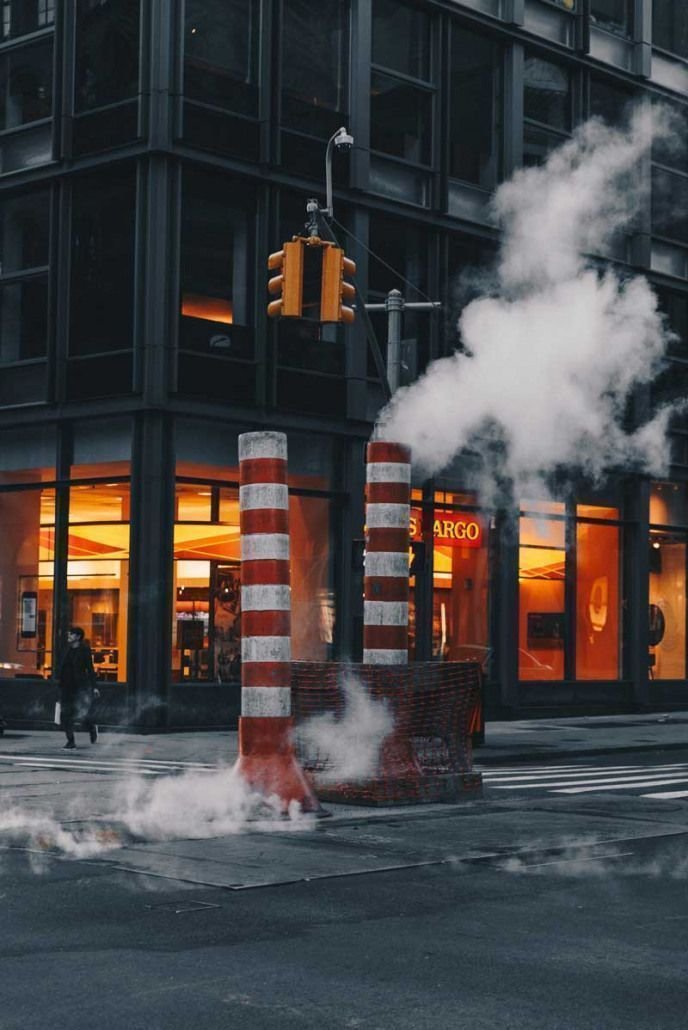Article 37 -Escalator Fire Hazards of Escalators and Ways to Prevent Them
Fire Hazards of Escalators and fire protections
The risk of fire in escalators is another hazardous situation and is also considered a type of escalator accident, which could happen due to different reasons. The Escalator truss is a place where there could be an accumulation of some combustible materials such as grease, oil, dust, fuzz, etc., which increases the potential of fire risks.
High levels of grease inside escalators coupled with dust and only a spark from activating the emergency brakes or a passenger carelessly dropping a match or cigarette would start a fire inside the escalator.
A lit cigarette dropped by the passengers who disobey smoking prohibitions could fall into the escalator and ignite the petroleum products that lubricate the moving parts. The cigarette could also ignite any debris that is gathered on the system of moving parts.
The constant movement of the metal causes a huge amount of heat. To avoid overheating, which could cause sparks and ignite a fire, routine lubrication of all the moving parts is necessary.
Moreover, because insulation material applied for cables and overloading of drives is combustible as well, the fire risk due to inflammation of such materials would increase if fire protections are not considered.
The possibility of cleaning the inner part of the escalator is one of the mandatory regulations to decrease fire hazard. Therefore, sufficient maintenance and a routine escalator inspection for checking the risk of fire guarantees the safety of escalators.
In general, fire protection protocols for escalators differ from country to country; therefore, the standard cannot include specific requirements for fire protection and building requirements.
However, escalators and moving walks are recommended, as far as possible, to be made of materials that do not create an additional hazard of fire.
Installing a fire detector option on the escalator is also recommended to detect fire due to different reasons including harsh environmental conditions that are present.
The damage and high cost of repair or replacement, as well as minimizing the impact of potential pollution and possibly toxic fumes, would be possible by applying fast and reliable heat detectors. As a result, the responsibility of fire detection system is not only saving lives but also protecting the building and infrastructure.
Another fire hazard could occur during escalator installation while the building construction is not over yet. Since some components of the escalator (e.g. handrail) are so combustible, these parts must be adequately covered until the end of the project.
This way, they would be protected against fire especially when some construction activities, such as welding are being done.

To avoid the fire hazard, The permitted materials applied for outer and inner decking, truss, pallets/steps, track system must be at least class C according to EN 13501-1:2007+A1:2009, 11.5. Based on the mentioned standard, a compliance test as well must be undertaken for the materials that are not generally classified. (SBI Test according to EN 13823:2010+A1:2014 [2])
This test must be applied for steps and pallets with plastic parts either on the tread surface or on the riser while the step or pallet is in a vertical position where the area with the plastic parts is forming the test surface.
In a continuous arrangement in steps equipped with plastic inserts on the tread and on the riser and for pallets with plastic inserts in the direction of movement, a test according to EN 13501-1:2007+A1:2009 (SBI Test according to EN 13823:2010+A1:2014) must be done solely with plastic insert material forming the whole test surface.
It should be noted that a continuous configuration involves the gaps between steps and pallets and the gaps are not considered as interruptions.
There are different methods to prevent and stop fire spreading from one floor to another through the escalator wellways.
One method is applying a fire shutter so that it is activated by temperature and smoke detectors and shuts off the wellway of a floor and prevents the spread of fire up through the building.
Another method for preventing fire is using fireproof baffles surround the wellway hanging from the ceiling so it deflects the smoke and flame. In this method, a curtain of water from sprinkler heads on the ceiling so that it isolates the escalator.
In this method, the fire hazard is prevented through isolating the fire by a spray-nozzle curtain of water to act as a smoke guard. These water nozzles which are used for close-space and are high-velocity create a compact water curtain.
This way smoke and flames are prevented from rising through the wellways
The other method is that fresh air is taken into the building through using sprinkler-vent fire control system and a blower directs the air down through the escalator floor openings.
Then, an exhaust fan on the roof pulls up the air under the ceiling of each floor opening through the exhaust duct. This system also involves spray nozzles on the ceiling to extinguish the fire.
Note: Fixation and installation of sprinklers in escalators must be done by considering the special needs of the machine.





